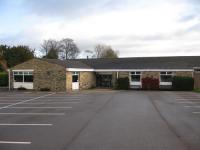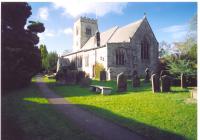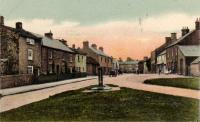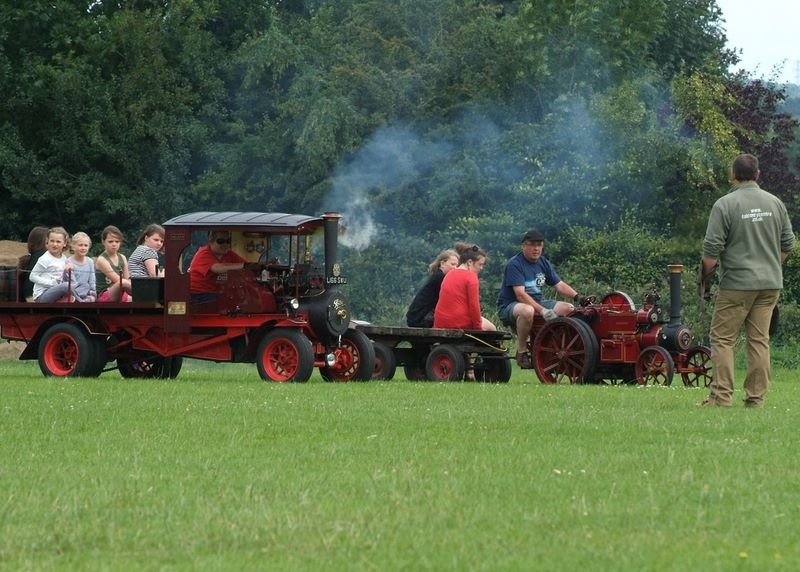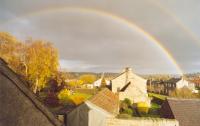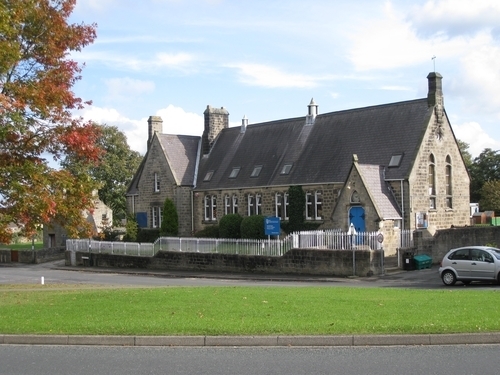Recent articles
© DT Online 2010 - 2024
| Extracts from Book One ("Villagers' Reminiscences")Past School Life"When I went to the Village School there were about ninety-six pupils. We sat at old-fashioned desks with iron frames. There were no exercise books, pencils or pens - just slates and slate pencils, which squeaked when they needed to be sharpened. As infants, we had sand trays in which we wrote our letters and did simple drawings. We were not allowed to touch them between lessons; the teacher shook them so that the sand did not all collect in one corner. The boys wore clogs or very heavy hob-nailed boots, corduroy suits - jackets and trousers which came just below the knee - and celluloid collars; we girls had buttoned-up or laced boots and, my goodness, it was difficult once one lost the tags to get them through the holes. My great uncle, my grandmother's brother, was a cobbler and shoemaker in the village, so he always made my boots, which I had to continue to wear even when they became too tight, because they were so expensive. When I grew older and we went up to a farm on the Skipton Road, I wore clogs in the winter because we had to walk all the way down to the school, setting off before eight o'clock in the morning. As the Village School was C. of E. and Church and School were very closely linked, the Vicar was much in evidence. At five to nine the school bell tolled a warning; at nine o'clock it was rung again and that was it! Anyone late was caned. The Vicar took Assembly; we sang a hymn and said prayers. That was followed by three quarters of an hour's Religious Instruction - he would read the Bible and explain it to us. Otherwise, most of the time was spent on the three R's. I never liked music: I felt that I "couldn't sing right", which was rather unfortunate as the teacher was a trained singer. I said before that we had slates and slate pencils, but when we were older we did progress to pens and inkwells. The boys used to mix the powder and water in the porch. If pens were dropped on the floor the nibs became crossed, so we constantly needed new ones - and woe betide us if we didn't use them properly: we had to go thin on the up-stroke and press thick on the down-stroke. Naturally, the schoolmaster taught us, whilst his wife instructed the Infants in the three R's and the older girls in housewifery and sewing and darning of socks or patching of clothes once a week. We even learned the theory of cooking, but never practised it! Yes, you could say that we had a smattering of all the rudimentary skills. The top class was called the 6+ Standard and we stayed in it until we left school at thirteen. There was no 11+ examination then - nor were there school dinners. We took our Lunch in black leather satchels" . . . . .(Annie Pawson) "I went to the Village School and my brother joined me there. At first, Mr. Hough was the Headmaster and Miss Arnison taught the girls dancing, as she rattled her cane. Believe me, the cane played quite a large part in my life - I was often on the receiving end for talking! It is strange what one remembers. I was the lucky possessor of thick, strong hair, single strands of which were much in demand by miscreants, who laid them across the palms of the hands to be caned in order to minimise the pain. By tradition horsehair was used for this purpose, but mine was equally strong. The playing field behind the school was open for play in the evenings. We had happy times on the swings and on the old rocking horse." . . . . . (Doreen Nelson) "I attended the Village School from 1946 to 1953. In the Infant Class my teacher was Miss Slater, a dark- haired lady with a bun. Slates and slate pencils were still in use and I can still remember the awful noise they made. Letter cards and number cards were used to teach letters, writing and sums. Until about 1947 dinner was a packed lunch and I have vivid memories of sitting at my desk, being forced to finish up cold macaroni cheese, although I felt sick! I suppose I was a very tough child in spite of being ill with bronchiectasis (a lung disease leading to many other problems). I have a happier memory of a wall-painting of a woodland and a fairy - it was magical. It had been painted by Miss Slater. The Infants' classroom also housed the lending library, a cupboard full of books not owned by the school, but lent out one evening a week by the librarian, Mr. Rule. The Middle Class teacher was Miss Arnison. She was "small and very sharp". She used the cane and actually broke one while punishing a boy called Philip Noble, whom she regarded as "the worst boy in the class". He no longer lives in the neighbourhood. Miss Arnison taught us copperplate writing by making us copy curves over and over again until she was satisfied. All we girls were taught to knit garter-stitch and stocking-stitch for dish-cloths. We were even taught moss-stitch - not easy for seven-year olds. In the second year of the Middle Class, I progressed to making fawn woollen mittens! At eight, we were taught quite complex sewing - measuring, folding, tacking, hemming; embroidery with long and short stitch, cross-stitch, appliqué and blanket-stitch. I still have a little bag made at that time to illustrate all these techniques. It's now in use as a Scrabble-tile bag! The school doctor and dentist used the middle class room. The whole class was moved out while dental treatment was carried out, pupils listening for the moans from the next room. The school nurse visited regularly and did "head-checks" in the girls cloakroom. I can still remember my mother's horror when I had "fairies" (head-lice) once after a hospital admission. Playground games include singing games like "King William", "The farmer's in his den" and "In and out the dusty windows". Some games were seasonal: whip and top and skipping with the big rope, two girls turning and several joining in with various clever tricks like "running through and over". Sometimes two ropes were used together. I don't recall any organised games until I was in my last year at school. The "Big Class" was for children from nine to eleven and sometimes pupils were in that class for three years. Poetry was learned by heart, the class chanting in unison such poems as "Hiawatha" by Longfellow. The older and brighter pupils taught the slower readers. Mrs Giles was Head Teacher until 1952. She lived in the School House with her husband, who was a builder. Her daughter, Sheila Carlton now lives in Peckfield Close. The Vicar was a regular visitor to the "Big Class" and the whole school went to the Parish Church for Christmas and Ascension Day services. The school Christmas Party was held in the Dale Hall Café over the present car showroom. The food was provided by our mothers and I recall carefully carrying blancmange in a glass jelly-mould all the way from our cottage at Clint to the party. At Christmas in 1952 for the first time, I think, we children took part in a Nativity Play. The piano in the big classroom was played for the musical accompaniment. By this time Miss Allen was Head Teacher. In 1953, Coronation Year, bulbs were planted on the Green by the children. Miss Pyne, who had succeeded Miss Arnison, taught a small group of big girls the Maypole Dance. In winter, the infant's and middle classrooms were heated by an open fire, which was protected by a guard, while the big room had pipes, heated by a coke boiler. The playgrounds for boys and girls were separated by a high wall, in which was one gate which was either kept closed or was supervised by a teacher. There were three toilets across the playground and two sheets of Izal toilet paper were issued on request! I remember some of the infants having "accidents", which wasn't surprising. Incidentally, in the infant classroom three little day-beds could be opened up for the tiniest children to have a sleep after dinner . . . . . . . . . . we had no school uniform. For me the usual winter wear was a hand-knitted jumper and knee-socks, with a kilt or pinafore dress or wool skirt; for outdoors I had a winter coat, a pixie-hood and a macintosh. In summer I wore hand-made cotton dresses, a cardigan and white socks and - if the weather were very hot - a hated and dreaded sun-bonnet. Occasionally, when we were in the "Big Class", games were played in the field behind the school, the access being through a kissing gate, now blocked up. In my time there was an old swing frame in the field, but no swings. There was also an old rocking-horse set in cinders and a plank-swing. Towards the end of my village schooldays, promising pupils took the Scholarship Examination: the first part at school in October, the second part in the following February, when selected pupils were taken by taxi to New Park for the day. I remember a cold, snowy day, a ride round the area with Mr. Ralph Robinson in his brake and arrival at the school, which seemed enormous and very bleak. I was lucky enough to pass the exam and to go on to the Grammar School" . . . . . (Janet Pritchard) "There were three classes at school, the Upper fourth Standards being together in the big room. I don't think that very large families were in fashion then. One of my first tasks was to learn "proper" writing and to forget the "printing" that had been in vogue in Sheffield. I also had to learn The Lord's Prayer. Early morning assembly was followed by the usual lessons: Scripture, English, Arithmetic, History, Geography, Science, Drawing and Sewing. The last named I particularly liked and I was very good at it. Sewing lessons were enlivened by the teacher singing songs from "The Tales of Hoffman" in an excellent contralto voice. I also learned to knit - and we all had to produce socks in brown wool. A few of us girls had to go to the vicarage to learn special dances for the garden parties held in the large garden there. Canon and Mrs. Peck looked after us well, providing afternoon tea. We were taken on Nature Walks, some of them around Swincliffe. We played in the "river field" - now closed to the public - beyond the bridge on the left. That field belonged to Mr. Clifford Lister, an important farmer. Both boys and girls played a game not encountered elsewhere. Called "Touch and pass", it had similarities to rugby. We did not compete against other schools in this sport, but we did play opponents at cricket and football. Wednesday was games day - a highlight of the week. Sometimes there would be punting on the river after school. The head teacher for most of my schooldays was Mr. Hough. Previously, he had been a captain in the army and he brought new ideas to the school, introducing drill for fifteen minutes before dinner. In the days of his predecessors, an elderly, old-fashioned couple, the only exercise we had was throwing bean bags! I carried my dinner to school in a small attaché-case. In one of the cottages opposite Manor Farmhouse lived a kindly lady called Miss Ada Ellis, who had one leg in a calliper. At a charge of sixpence a week she would make a drink of tea for eight or nine of us and would warm up our food. She also made cakes for us - three for a penny. Then, from foreign parts appeared a cousin, who married Miss Ada and took her away. After that Mrs. Hough made tea, which she served in elegant china cups. When I left school at fourteen, there were only fifty-two pupils in the school and some of the top class, Standard 7, were allowed to stay on until Christmas, instead of going at the "official" time in July. Just two years later poor Mr. Hough died at the age of forty-three. His widow survived to the ripe old age of ninety-two, living in a house in Hollins Lane" . . . . . (Winifred M. Steel) Extracts from Book One ("Villagers' Reminiscences") Past School Life |




